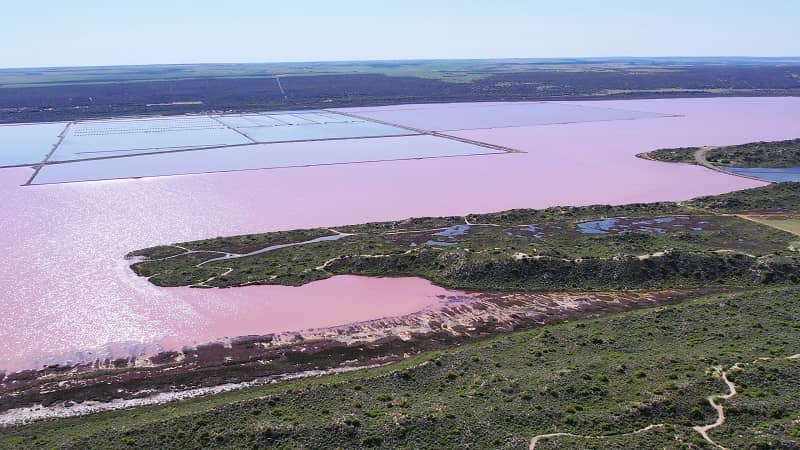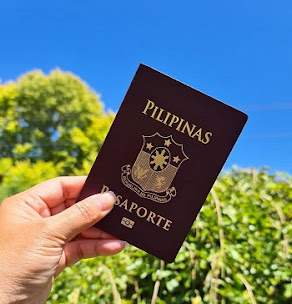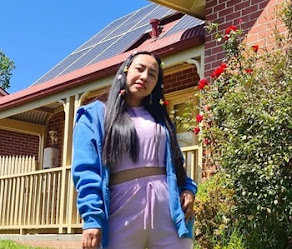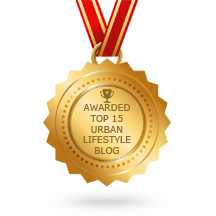If you fancy or even love pink, then visiting Hutt Lagoon is a destination you shouldn’t miss when you are in Australia.
Located 515km north of Perth, the lake with a Wes Anderson vibe is neighbored by the picturesque Gregory, a small town renowned for its fishing. The famous pink lake is just 2-kilometers away from the Indian Ocean.
History of Hutt Lagoon
Hutt Lagoon was named by the explorer George Grey, who camped on its eastern edge in April 1839, while on his second expedition along the western Australian coast. He mistook the wet season lagoon for a large estuary and named it “the river and estuary now discovered” after William Hutt, brother of John Hutt, the second Governor of Western Australia.
Geology of Hutt Lagoon
Hutt Lagoon is a 70 square kilometer marine salt lake situated at the junction of the Perth and Carnarvon Basins. This area is characterized by exposed areas of Permian/Silurian siltstone and Jurassic sandstone and sediments of marine origin.
The Lagoon itself lies on Quaternary deposits of alluvium, colluvium, and dune and beach sands
(white calcareous and quartzose sands). Coastal dunes 0.3 - 1 km wide, with a maximum elevation of 13 m, separate Hutt Lagoon from the Indian Ocean. A plateau of approximately 100 m elevation, which includes 8 km of the cliff, is near the inland edge of the site.
Why is Hutt Lagoon a pink lake?
Hutt Lagoon takes on a pink or red hue due to algae called Dunaliella salina.
This algae produces carotenoids, which in turn produce a reddish-pink color. The beta-carotene made by Dunaliella salina has uses other than making salt lakes look pretty and is often used in food coloring, and is a source of Vitamin A. Dunaliella salina itself is sometimes used in the cosmetics industry and is reputedly good for skin health.
The Hutt Lagoon is home to the world’s largest microalgae production plant, a 250 hectares series of artificial ponds used to farm Dunaliella salina, leased and operated by the German chemical company, BASF. From above, it looks like a patchwork quilt, with artificial ponds ranging in color from bright pink to copper red, as they develop different kinds of algae in varying concentrations.
Hutt Lagoon also provides a commercial supply of Artemia brine shrimp. Artemia is a specialty feed used by prawn and fish farmers and the aquarium fish trade.
At the northern end of Hutt Lagoon, you will also find the world’s biggest mines and processing plant of garnet sands, operated by GMA Garnet Pty. Ltd. and they produce 400 000 tonnes of garnet sands per year. It is used in sandblasting and water jet cleaning applications.
This year, another garnet mine company opened recently called Australia Garnet.
Best time to visit Hutt Lagoon
The best time to see Hutt Lagoon is when there’s more water in it, the sun is high, and the sky is clear between 10AM to 2PM where you can enjoy the view of the most vivid shades of red and pink. Summer season is the best time to visit.
Always check the daily weather for the best time to visit.
Hutt Lagoon is a good example of a coastal brine lake and is an important stop-over for migratory waders. It may also play an important role in the hydrology of the area and provides a large area of habitat for native flora and fauna.
This pink lake is recently becoming a hot topic in Chinese social media, as the Hutt Lagoon is one of the film locations for Jay Chou's latest music video Pink Ocean.
Can you swim in Hutt Lagoon?
It is not illegal to swim in Hutt Lagoon as long as you don’t swim in the areas leased by BASF. Hutt Lagoon is naturally highly saline (>150 g/L) and sodium chloride dominated so any eventual cuts will be very painful. You can bring your floaties, picnic mat, and your camera to enjoy the pink lake. You can also bring a gumboot or walk barefoot along the shore.
Don’t forget to bring sunscreen lotion and a hat with you, especially on a sunny day. Always exercise the ‘Leave No Trace Principles’ as you travel: meaning don’t leave any rubbish at the lake so that the next visitors can enjoy this unique spot just as much as you.
Hutt Lagoon Entry
Thankfully, there is no Hutt Lagoon entry fee. Just drive there and start exploring this bubblegum-pink lake. The best land-based view of Pink Lake can be found on the road to Port Gregory, Port Gregory Road. There is an area for you to park, and you can then walk down to the edge of the water. The lake can also be viewed from George Grey Drive, however, there is less of an opportunity to park and admire the lake from this side.
How to get there
If you are coming from Kalbarri, you'll catch a glimpse of the lake after a half-hour drive. Those coming from Geraldton will have to head north for just over an hour before spotting the iconic landmark.
Coming from Perth, it takes 5.5 hours drive.
There is no public transport that would drop you off right at Port Gregory pink lake, so the best way to get to Hutt Lagoon is to drive there. Especially, as going there by car allows you to drive around the lake.
Hutt Lagoon scenic flights
You can also see Hutt Lagoon from above to get a full view of the pink color. Geraldton Air Charter and Shine Aviation run Hutt Lagoon pink lagoon flights from Geraldton, and Kalbarri Scenic Flights offer them from Kalbarri.
Is visiting Hutt Lagoon worth it?
Yes! The long hours of driving are definitely worth it!



































This looks absolutely breathtaking! I saw photographs of the Hutt Lagoon a few years ago and added it on my bucket list. You're one lucky ducky to have finally seen it IRL.
ReplyDeleteThere are 29 pink lakes around the world, and most of them are here in Australia!
DeleteOMGGG so beautiful! i never knew na merong pink body of water! does it stay pink all through the year?
ReplyDeleteyes, all year round always pink! Depende sa ganda ng weather kung gaano ka-pink! Kapag maliwanag ang sikat ng araw, like no clouds at all, dun lumalabas yung tingkad ng bubblegum pink.
DeleteI totally did not expect it to be literally pink. What a wonder of nature! Straight from a fairytale!
ReplyDeleteso pink and so beautiful! I would love to visit this! just walk barefoot along the shore but not swim maybe because of the info you provided...
ReplyDeleteWow so amazing and breathtaking place! So beautiful place to visit 🥰😍
ReplyDelete